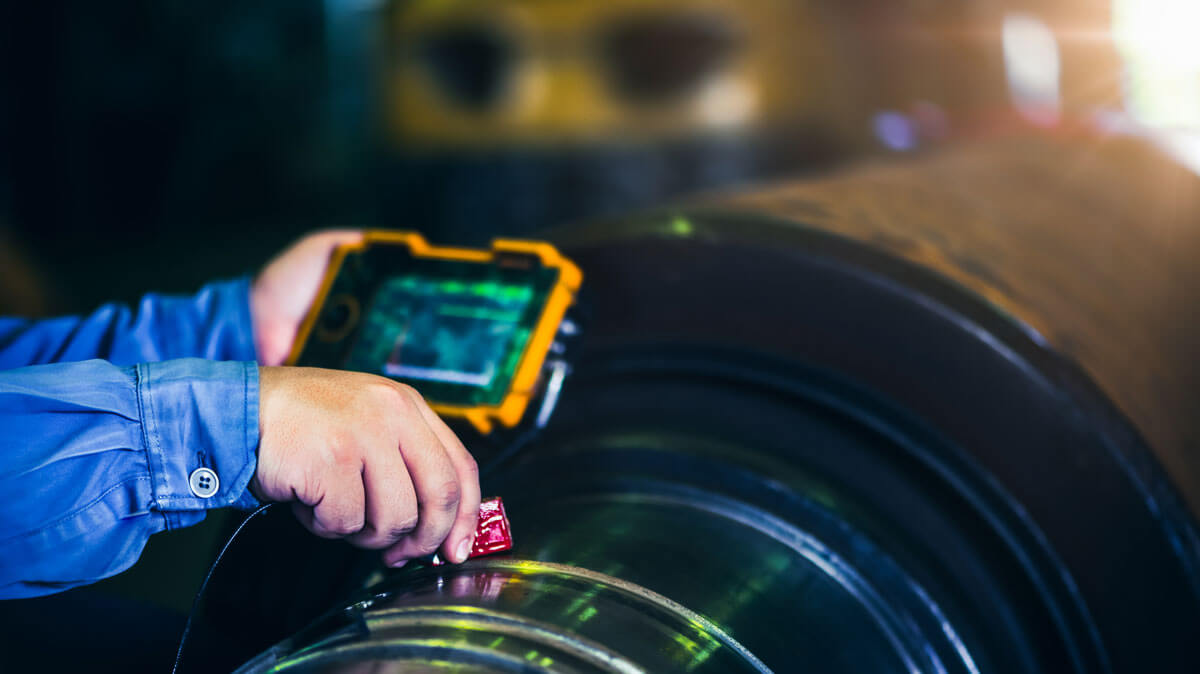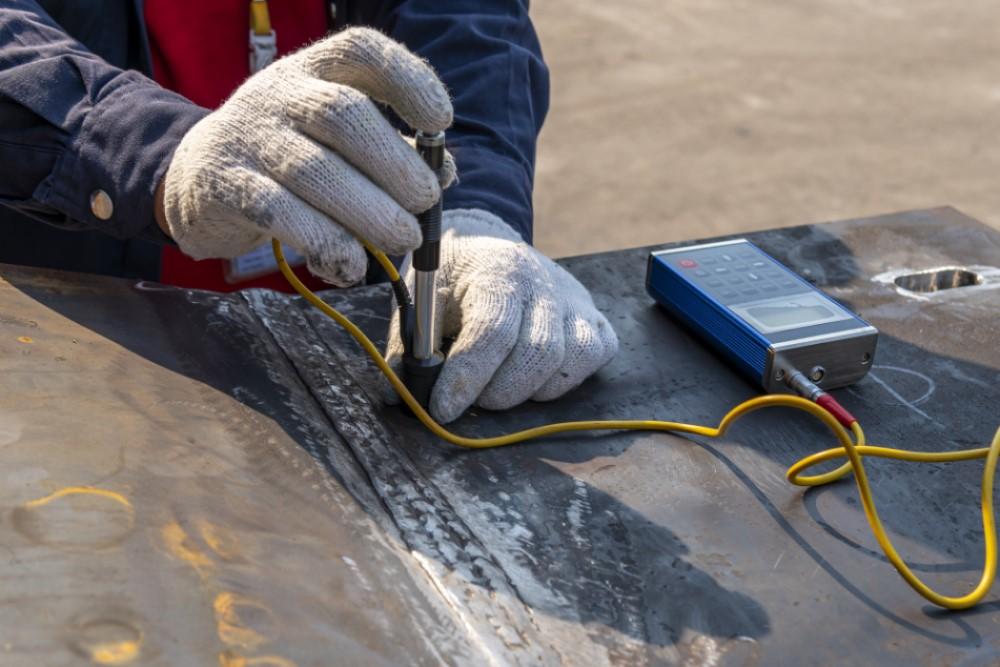The Vital Role of Welding Examination: Recognizing the Procedures, Tools, and Standards That Govern High Quality Analysis in Welding Procedures
Welding assessment is an indispensable element of top quality guarantee in welding operations, guaranteeing the structural stability and safety and security of bonded assemblies. Understanding the interaction between assessment techniques and regulatory conformity increases crucial inquiries regarding the difficulties faced in keeping these crucial protocols.
Relevance of Welding Assessment
Welding evaluation is essential in making certain the honesty and security of welded frameworks, as it frequently acts as the final checkpoint prior to components are taken into service. The importance of this inspection exists in its ability to recognize prospective problems that might jeopardize the efficiency and longevity of welded joints. Given the high risks involved, especially in markets such as building and construction, aerospace, and vehicle, comprehensive examination processes are important.
Welding issues can develop from different factors, including improper methods, poor equipment, or improper products. Failure to detect these problems can cause catastrophic repercussions, including structural failures, which might cause injury, death, and significant economic liabilities. Welding evaluation offers a methodical strategy to examine the high quality of welds, making sure conformity with industry standards and regulatory requirements.
Furthermore, efficient welding assessment adds to enhancing overall efficiency by lessening rework and making certain that jobs continue to be on schedule. By fostering a culture of high quality assurance, organizations can also increase their track record and customer trust fund. Basically, the significance of welding evaluation can not be overstated, as it plays a pivotal duty in guarding both human lives and financial investments in framework.
Trick Evaluation Treatments
A comprehensive technique to evaluation procedures is important for guaranteeing the top quality and reliability of welded joints. Effective examination begins with pre-weld evaluations, which include evaluating welding specifications, material properties, and joint styles to identify possible difficulties. This prep work stage establishes a standard for top quality assumptions.
During the welding procedure, in-process examinations are important. Assessors keep an eye on parameters such as warmth input, traveling speed, and electrode angle to guarantee conformity with well-known requirements. Aesthetic examinations are the very first line of defense, making it possible for the identification of surface area flaws, such as fractures, porosity, or insufficient combination.
Post-weld assessments entail advanced methods to examine the stability of the joint. This may include non-destructive screening (NDT) methods such as ultrasonic testing, radiographic testing, or magnetic fragment testing. These strategies offer much deeper understandings right into the internal framework of the weld, exposing possible defects that might not show up externally.
Documentation plays an integral duty throughout the examination process. In-depth documents of evaluations, consisting of findings and restorative activities, make sure traceability and liability, inevitably adding to constant improvement in welding techniques and overall quality control.
Important Equipment for Assessment
Efficient examination relies on making use of customized equipment developed to examine the top quality and honesty of bonded joints. Key tools in this process include aesthetic evaluation tools, such as magnifying glasses and borescopes, which enable examiners to determine surface area issues and abnormalities. In addition, ultrasonic screening (UT) devices plays an important function by utilizing high-frequency acoustic waves to find interior imperfections within welds, guaranteeing that concealed weak points are recognized prior to they cause failing.
Radiographic screening (RT) is an additional necessary technique, using X-rays or gamma rays to create photos of the welds, exposing interior issues that might not show up with various other inspection approaches - Houston Welding Inspection. Magnetic fragment testing (MT) is employed for ferromagnetic materials, permitting assessors to discover surface and near-surface issues by applying electromagnetic fields and great fragments
Dye penetrant testing (PT) is additionally go to these guys considerable, involving the application of a fluorescent color to expose surface splits and stoppages. Each of these tools and strategies adds to an extensive inspection method, guaranteeing that welded structures fulfill the needed high quality criteria and remain secure for use in their corresponding applications.

Industry Specifications and Rules
Quality control in welding assessment is considerably affected by industry requirements and laws that regulate techniques and guarantee security. These criteria function as criteria for quality, outlining the required protocols for inspection, testing, and paperwork. Trick companies such as the American Welding Culture (AWS), the American Culture of Mechanical Designers (ASME), and the International Organization for Standardization (ISO) develop guidelines that welding experts need to abide by throughout the examination process.
Conformity with visit homepage these standards is not only a matter of regulatory obligation but also an essential part of threat monitoring in welding operations. They encompass various elements, including material selection, welding techniques, and certifications of workers. AWS D1.1 lays out architectural welding needs, while ISO 3834 defines high quality needs for welding procedures.
In addition, sector laws determine the essential qualifications for welding assessors, demanding qualifications that verify their knowledge. This positioning with criteria makes sure that examinations are performed consistently and accurately, inevitably protecting the stability of bonded structures. Sticking to these market requirements and guidelines is critical in advertising operational efficiency and keeping public count on welding techniques.
Challenges in Welding Examination


Welding assessment encounters various difficulties that can affect the integrity and safety of bonded frameworks. One significant obstacle is the complexity of the welding refines themselves, which can vary considerably relying on materials, joint arrangements, and environmental conditions. This variability demands a detailed understanding of diverse assessment strategies and their appropriate original site applications.
One more difficulty depends on the progressing nature of welding modern technology. As new materials and techniques are presented, examiners must continually upgrade their expertise and abilities to successfully assess the high quality of welds. Furthermore, the physical access of weld locations can hinder examination initiatives, particularly in restricted or high-risk atmospheres.
Moreover, human factors play an essential role in welding evaluation. Houston Welding Inspection. The subjective nature of visual evaluations can lead to disparities, as different examiners may interpret the same weld in a different way. This highlights the value of standard training and certification for examiners to ensure a consistent technique to top quality analysis
Lastly, the combination of sophisticated technologies, such as automated assessments and man-made intelligence, provides both obstacles and possibilities. While these innovations can enhance accuracy and performance, they likewise require substantial financial investment and competence to carry out efficiently. Addressing these obstacles is crucial for maintaining the stability of welded frameworks.
Final Thought
Welding inspection is essential for ensuring the security and honesty of bonded structures. Through extensive examination treatments, using specialized equipment, and adherence to identified sector criteria, the quality of welding procedures can be systematically examined. Challenges linger in the examination process, yet the implementation of effective techniques can alleviate dangers connected with structural failings. Inevitably, a robust welding examination structure not only ensures conformity with laws but additionally improves general functional efficiency and reliability.
Welding assessment is an indispensable element of top quality guarantee in welding procedures, making certain the structural stability and security of bonded settings up.Welding inspection is essential in making sure the stability and security of bonded frameworks, as it regularly offers as the last checkpoint prior to components are placed right into solution. Welding assessment supplies a methodical technique to examine the top quality of welds, making sure compliance with sector requirements and regulative demands.
Quality assurance in welding inspection is dramatically affected by industry criteria and laws that govern techniques and guarantee security. Key organizations such as the American Welding Culture (AWS), the American Culture of Mechanical Engineers (ASME), and the International Company for Standardization (ISO) develop guidelines that welding professionals have to adhere to throughout the inspection procedure.